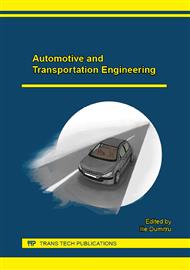p.3
p.12
p.18
p.26
p.36
p.44
p.50
p.54
Modal-Dynamic Analysis of the Steering Mechanism on a Vehicle
Abstract:
The present paper aims to identify the dynamic feedback of a steering mechanism in a vehicle, mainly under stationary conditions. The modal – dynamic analysis was established by applying two methods, the experimental method and the finite element modelling. For the experimental results concerning the proper frequencies of the steering box and of the tie rods assembly, a method of excitation with a measured and controlled linear momentum (impulse) force was implemented. The modal-based analysis aimed to measure the proper frequencies and the proper vibration modes. Therefore, the harmonic analysis obtained by using the finite element method is applied in order to determine the frequency variation diagrams of some nodes displacements, from some of the elements of the mechanism. Furthermore, the applied analysis seeks to identify the critical frequencies and the corresponding phase angles by investigating the displacements, the strains and the stresses of the mechanism elements, which correspond to critical frequencies and phase angles.
Info:
Periodical:
Pages:
26-35
Citation:
Online since:
January 2016
Authors:
Price:
Сopyright:
© 2016 Trans Tech Publications Ltd. All Rights Reserved
Share:
Citation:


